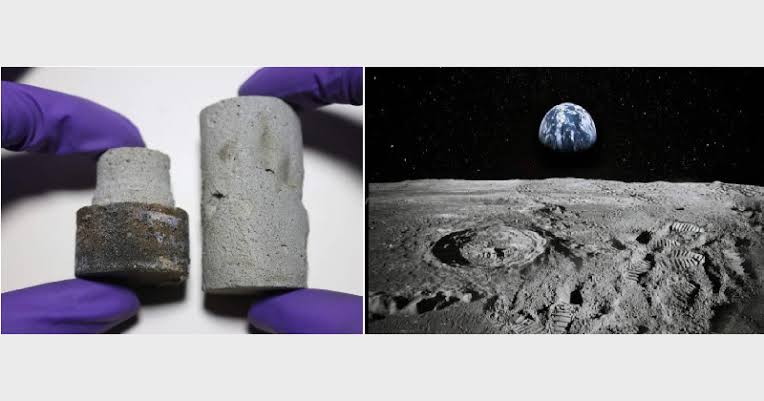Building on Moon : Bharat develops Space Bricks

Scientists at the Indian Institute of Science (IISc) have made significant progress in developing “space bricks” for potential lunar construction. These bricks will help Bharat in building the structures of its future base on Chandrama.
The research Scientists at IISC used lunar soil simulants as the primary material for creating these space bricks. Lunar soil simulants closely resembles the composition of soil of Chandrama. So once the temporary base is established in the foreseeable future by Bharat then te work will start on making a permanent full fledged base. Lunar soil will be used for construction
IISC Scientists used a liquid-state sintering process that exploits the melting of glass-rich basalt minerals found in lunar Regolith simulants. By heating the Regolith to temperatures above 1,200°C (the basalt melting point), the molten basalt acts as a binder, resulting in significantly stronger consolidated space bricks.
The compressive strength of these liquid-sintered bricks reached up to 58 MPa, nearly four times stronger than bricks produced via solid-state sintering at lower temperatures.
These space bricks could be easily used for constructing load-bearing habitats and infrastructure on Chandrama thus eliminating many of the logistical problems of hauling heavy loads from Prithvi to Chandrama. This will hugely reduce the lowering mission costs of Chandrama Project.
The brick making process used urea ( sourced from human urine) and lunar soil simulants as raw materials, significantly reducing overall expenditure. They combined experimental techniques like scanning electron microscopy and differential scanning calorimetry to investigate the underlying mechanisms. Instead of cement, the researchers used guar gum for support, resulting in a lower carbon footprint.
The project brings together expertise from biology and mechanical engineering. Living organisms, such as bacteria, play a role in mineral precipitation, and modern science has harnessed this ability for lunar construction.
The IISC team collaborated with the Indian Space Research Organisation (ISRO) in advancing this research.
These space bricks represent a significant step toward establishing habitable and sustainable structures on Chandrama and later on Planet Mangal also. The same approach could also be applied to make sustainable bricks on Earth2.



